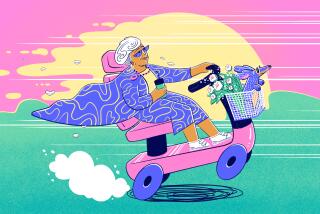Aging of Population Weighs on Women
- Share via
James Flanigan’s column (“The High Cost of Undervaluing Work by Women,” Sept. 10) mentions in passing an area of activity that warrants more detailed exegesis: caring for elderly relatives.
The increasing proportion of the population that lives past retirement and into old age continues to be the largest fact of social life as we prepare for the next century. Unfortunately, this impact continues to be discussed in terms limited by debates over the future of Medicare and Social Security--as important as these issues are, the phenomenon of aging will affect our social lives more broadly than would be expected by the arcane financial discussions that result.
The relationship to Flanigan’s thesis is that the social demands embedded in the aging of our population continue more directly to affect women and their other, including economic, roles in society. Not only are the elderly more likely to be women, but women are more likely to take on the responsibility of caring for the elderly in their families. For example, caring for a parent (or in-law) with Alzheimer’s disease may prevent a capable adult, again more commonly a woman than a man, from seeking or continuing with regular employment.
An important related aspect is that long-term care for elderly who can no longer live alone because of physical or mental health impairments is predominantly women’s work. This expanding array of retirement or assisted living, board and care homes, and nursing facilities represents an entry-level employment opportunity for some women (who represent the overwhelming majority of workers in this field), life with quality for elderly women, as well as the opportunity for working women to continue in their professions. The health care debate is the less relevant for its neglect of these broadly interlocked issues.
STEPHEN READ
Los Angeles


